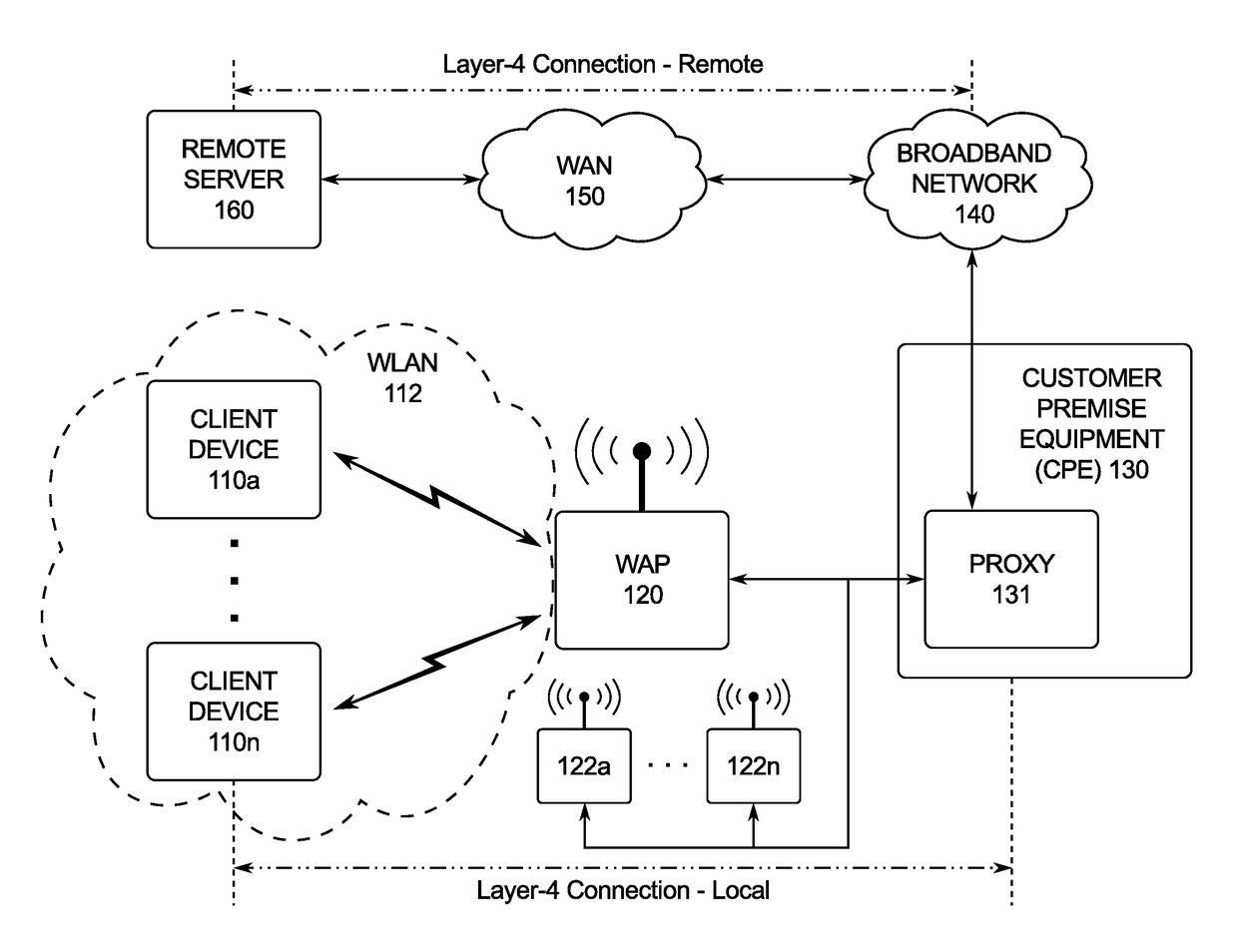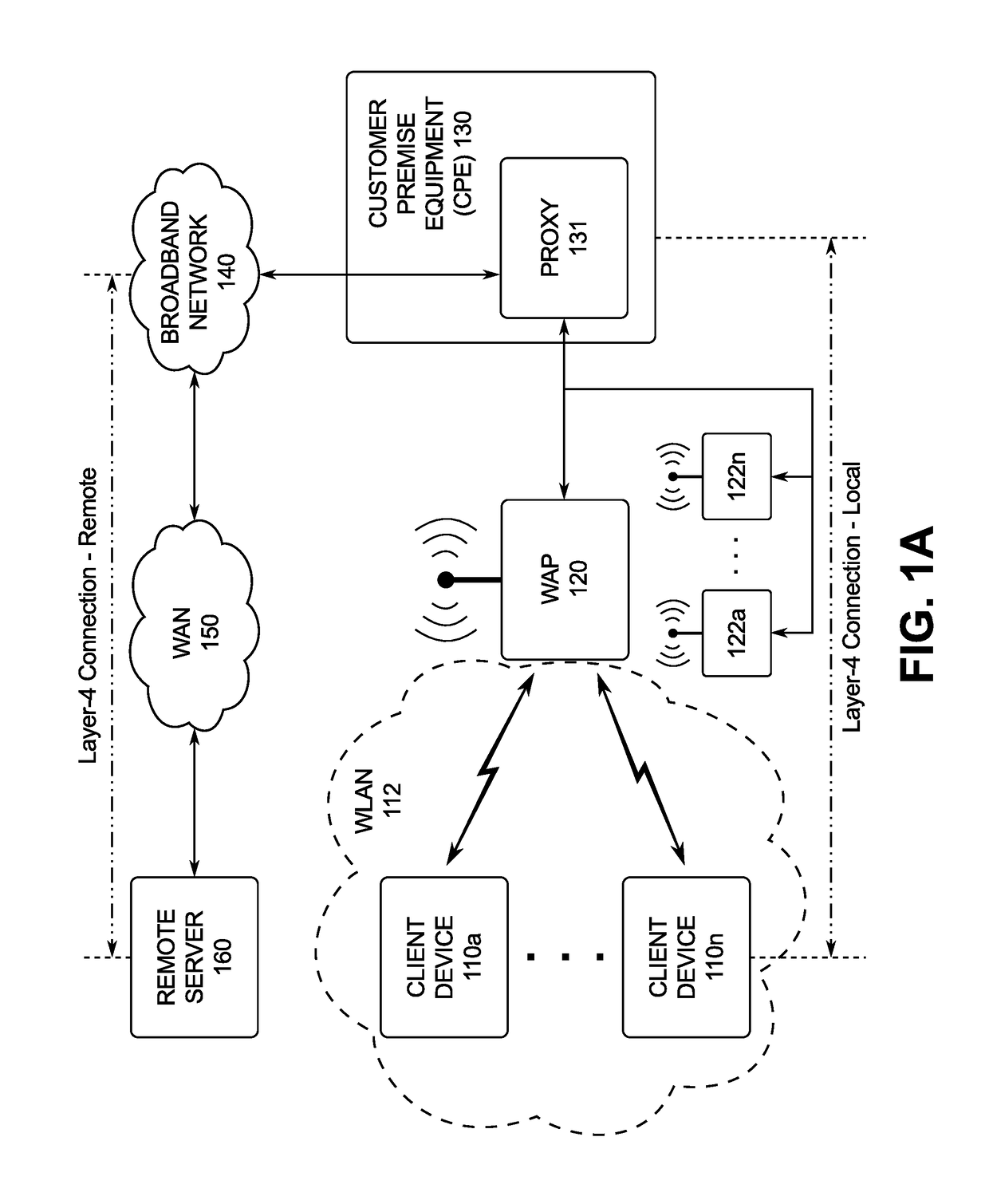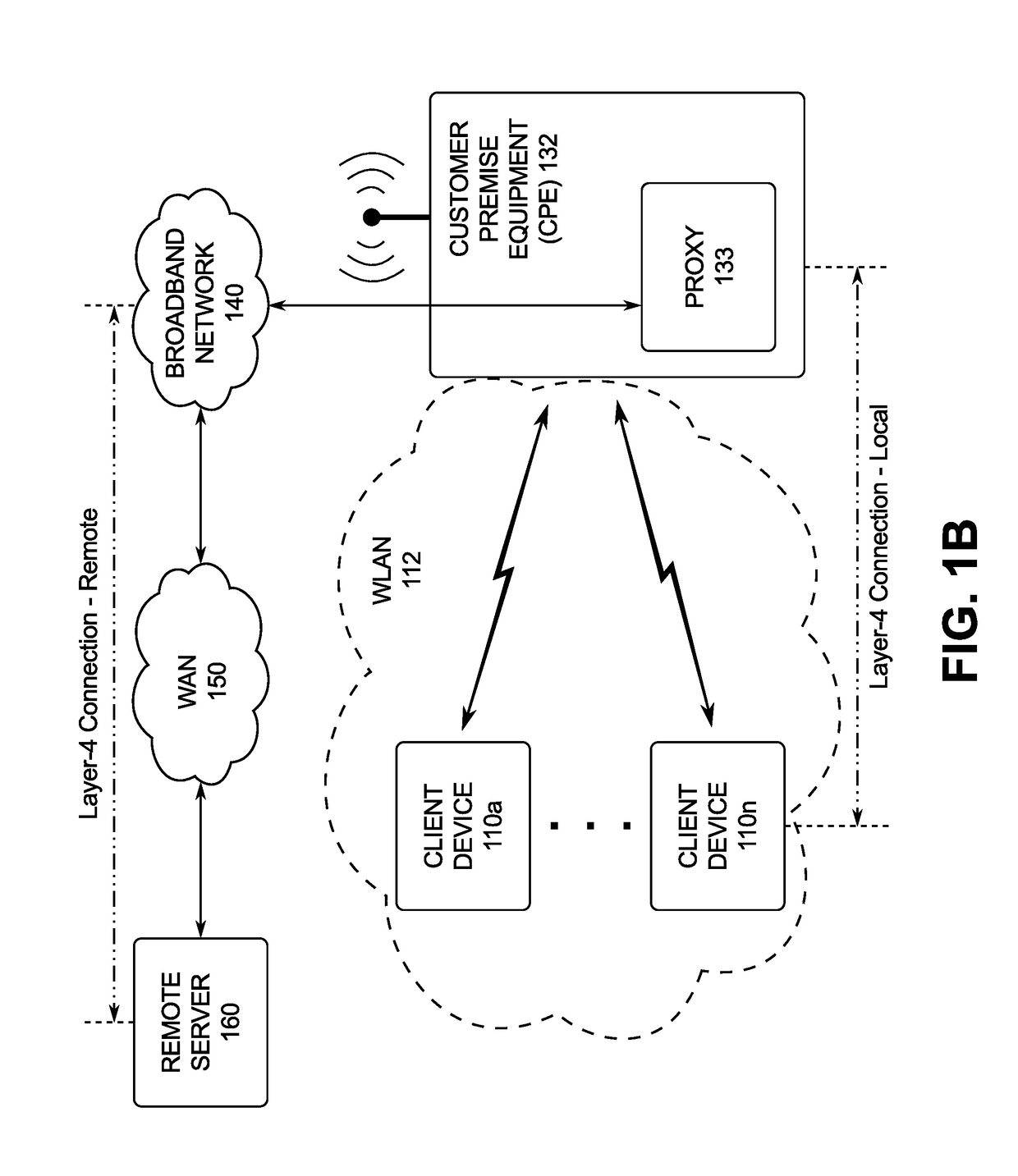While advancements are continuously being made in the Wi-Fi protocols and devices to support higher data rates, poor WLAN setup and unanticipated conditions in the environment can lead to significant and persistent performance degradation and user dissatisfaction.
Thus, although Wi-Fi standards have evolved to theoretically deliver high maximum data rates (in some cases, upwards of 1 Gbps), poor placement of devices, misconfiguration of devices, and environmental issues can substantially reduce
throughput and reliability in practice.
Plus, a
client device may fail to support a newer Wi-Fi standard used by a
router; the consequences of this may include the
client device not utilizing all of a
router's capabilities, or other
client devices experiencing reduced performance.
Additionally, a client device may, even when the client device supports the appropriate Wi-Fi standard and link conditions are good, experience poor performance due to the client device having limited CPU or memory resources which become overloaded and cause received data to be consumed slowly.
For home area networks, although some Wi-Fi routers may measure some basic Wi-Fi link quality
metrics, such as link quality, transmit rate, and error rate, they only give an indication of the current WLAN health and do not provide enough information to identify some of the commonly experienced problems, generally do not provide meaningful summaries for end users, or remedies for problems.
However, such statistics are measured, stored, and presented in a manner directed towards individuals with the skills and expertise or network admins and Wi-Fi-domain experts, and are not summarized and presented in a way useful to a layman.
Additionally, such hardware does not provide an algorithmic way of identifying the presence of, main causes of, and solutions for performance bottlenecks.
The problem is difficult because in many configurations customers provide their own WLAN hardware, which usually is not directly accessible to or configurable by a
broadband service provider.
The problem is also important, as the
broadband service provider is often one of the first places a customer contacts when experiencing networking issues, even if such issues arise from WLAN hardware neither provided by nor under the control of the broadband
service provider.
Given the large variations in RTT, looking at absolute value of the CWND statistics alone does not help.
Even though the WLAN link may have
high bandwidth, the client device may not be able to effectively use the available bandwidth due to memory restrictions or other flow control bases.
Lastly, although flow-control by the client device is captured, the zero window events are not sufficiently captured by this connection metric.
While connection
metrics like WU and RWU address flow-control by the client device, some extreme zero window cases are not sufficiently addressed.
Further, the Avg_SRTT metric assumes that high SRTT is due to poor link conditions.
However, RTT can be increased due to peculiar settings of the home
network configuration, where queuing delays can be introduced due to segmentation offloading,
traffic shaping or heavy buffering in the
wireless access point.
Including such RTT samples, however, can
skew the averages, hence the metric needs to be interpreted appropriately.
Applications like Youtube and Netflix will have low
goodput because of time-spacing while downloading the video segments.
This estimate, however, can be inaccurate in many cases.
Secondly, if the sender does not send a sufficient number of packets, the WND variable may not be updated to reflect true value of the send window that can be reached.
Also, if Avg_LU≦Full_AvgLU_Threshold, then the link was not fully utilized, and the LinkCapacity estimate may not be accurate.
Queuing of packets in the path between a CPE (such as CPE 130 illustrated in FIG. 1A) and a client device can
impact RTT values, which (in some cases) can lead to incorrect inferences from the Avg_SRTT metric.
High losses on a MARGINALLY GOOD connection will typically result in high
jitter.
For a POOR condition, there is a significant fraction of zero wait time (indicating a client device receive buffer
bottleneck), the send window is fully utilized but connection bandwidth is low, or the WLAN connection has high losses as well as moderate to low bandwidth.
Connections with a small number of ACKs may not yield enough samples to arrive at meaningful connection
metrics.
Also, connections that are active with short durations within a Sample_Interval (time between first and last ACK sample within a Sample_Interval), may yield biased results, and may not reflect the average link conditions.
The congestion, however, may be a result of a lot of connections within the client network, and not necessarily congestion from neighboring home area networks.
This may be a result of, for example, the client device being in a poor physical location or orientation (for example, an antenna may be poorly positioned) and / or the
wireless access point being in a poor physical location or orientation.
 Login to View More
Login to View More  Login to View More
Login to View More 


